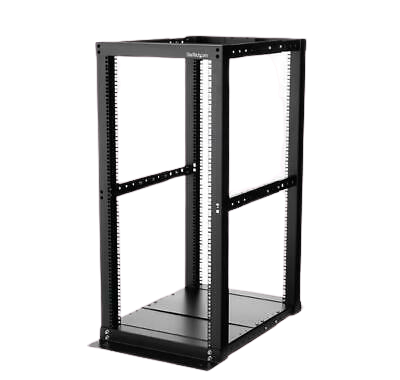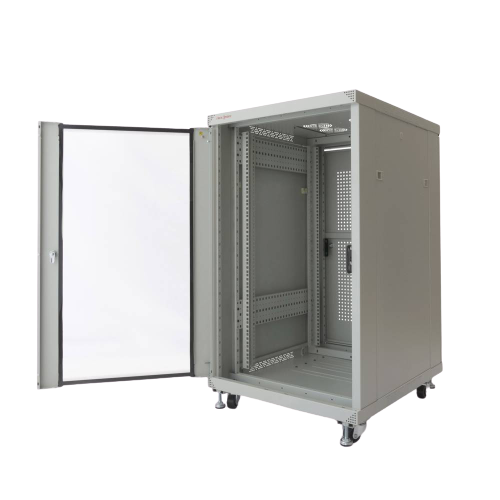Address
81 Spring Cove Rd. Swannanoa, NC 28778-3615Open Racks and Cabinets
The choice of using either an enclosed cabinet or an open network rack
It is very common for an Information Technology administrator to be confronted with the choice of using either an enclosed cabinet or an open network rack for the mounting of their patch panels and network appliances. While it is very rare that my advice is ever solicited, when asked, the answer always relates to whether the room has controlled access (locked door), and how much other equipment is going in that room.
Generally speaking, if the door is locked, or even lightly visited by the employees working on the premises, I nearly always advocate an open rack. Perhaps, it is a selfish motivation, since I never have to deal with the downtime involved when a curious and mischievous employee begins to tamper with network components for reasons known only to him. I look at the situation from three basic perspectives. 1. The initial cost of the installation can not be underestimated, and an open rack can be anywhere from 1/3 to 1/10 the cost. 2. The ability to add cable to the existing setup is complicated by an order of magnitude when a lockable enclosure is in place. 3. An open rack will never require any additional ventilation, which is often forgotten and increases the total cost of the cabinet.
While these may not be the decisive motivating factors in an IT professional’s decision, they should not be overlooked either. A cabinet that is difficult to access can result in unplugged and damaged cables by an unlucky installer. He may be working very carefully, but given the circumstances, it is not uncommon for otherwise conscientious professionals to inadvertently unplug important connections.
Generally speaking, these guys are doing the best they can, and if you provide them with an easily accessible patch panel, the mistakes will be fewer. Of course, one must also consider the security of the components. Though I’ve never seen it implemented, adventurous employees may very well be deterred by a polite sign requesting they “Do Not touch the equipment.” It’s worth a try.
However, if security is paramount, and in some situations it is. Then by all means, get the lockable cabinet. If the cabinet is large enough, try to position the switches a few rack spaces from the patch panels, so the panels empty ports can be accessed by future installers. Also, be sure to calculate all the items going into the cabinet and decide if you will require ventilation fans built into the enclosure. They aren’t free, but they’re a lot cheaper than replacing the electronics that will go inside.


